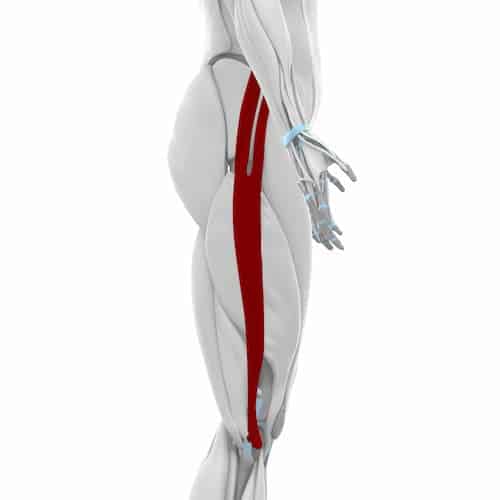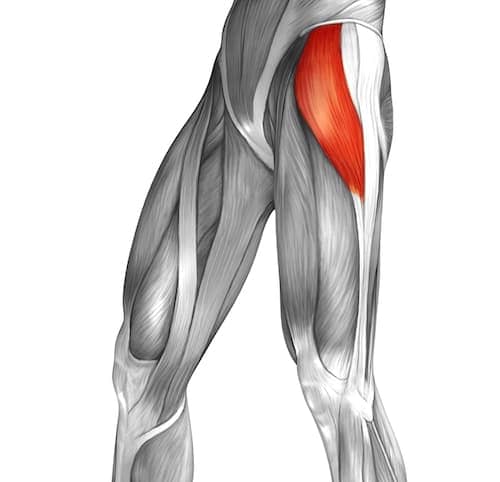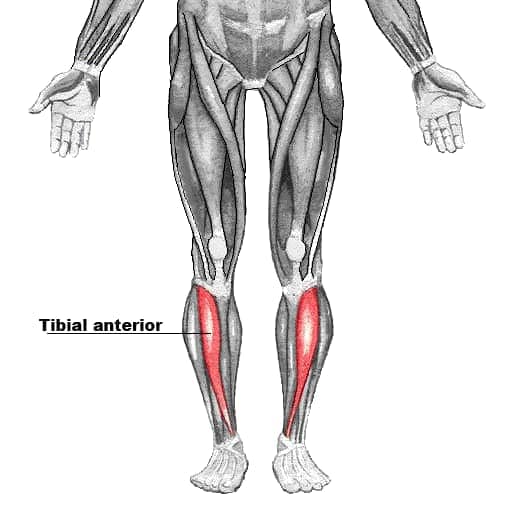If you’ve ever experienced a nagging tightness running down the side of your leg from hip to knee, you’ve likely encountered iliotibial band (IT band) discomfort. You might think that a good stretch will fix the problem, but IT band tightness is a little more complex than it seems.
Rather than being a standalone issue, IT band tightness is often a sign of imbalances in other areas of your body. To truly tackle this problem, it’s important to understand and address these contributing factors. This article will guide you through a comprehensive approach to alleviating IT band tightness from the comfort of your home.
I. Unveiling the Complexity of the IT Band

Stretching from your hip down to the side of your knee, the IT band is a long piece of connective tissue that plays an important role in your mobility. While discomfort is often felt around the knee, the source of the tightness could be quite distant from the pain point.
The IT band isn’t a muscle, so stretching or releasing it might not lead to the long-term relief you seek. To tackle the tension in your IT band, we must first understand that it is more a symptom of a body imbalance than the root cause of the discomfort.
II. The Real Contributors to IT Band Tightness

The IT band tension often mirrors the state of two key muscles: the Tensor Fasciae Latae (TFL), a hip flexor muscle, and the Anterior Tibialis (AT), located in the front of your shin. These muscles sit at either end of the IT band, so when they become tight, they pull the IT band taut from both sides, resulting in the familiar sensation of IT band tightness.

We can ease the tension on the IT band by reducing the tightness in the TFL and AT. This can be accomplished through specific self-massage techniques and stretches, which will help lengthen these muscles and alleviate the pull on the IT band.
In the next sections, we’ll guide you through some practical exercises to help bring balance to the TFL and AT, thus releasing the tension in your IT band.
III. Self Massage
Foam rolling is a popular self-massage technique that helps to release tight muscles and improve flexibility.
Foam rolling the TFL
- To start, you will need a foam roller.
- Position yourself sideways on the foam roller, placing it where your hip pocket would be. This is the general location of your TFL.
- The angle of your body should be slightly tilted forward, at about a 45-degree angle, not directly to the side.
- Roll slowly back and forth on the foam roller, targeting the TFL.
- Repeat this for a minute, then switch to the other side.
Foam rolling the Anterior Tibialis (AT)
- Position yourself with your shins on the foam roller (or you can do one shin at a time).
- Roll up and down the length of the shin (avoid the knee and ankle joint), applying enough pressure to feel a release but not to cause pain.
- Do this for about a minute on each side.
IV. Stretching
Following the foam rolling, stretching the muscles to further enhance flexibility is beneficial. For the TFL and AT, we have a few select stretches.
Standing TFL Stretch:
- Start by standing sideways near a wall, with one arm placed on the wall for support.
- Your feet should be in a staggered stance, with your back foot in line with the front one.
- Push your back hip towards the wall while leaning away from the wall, stretching the side with the leg behind.
- To stretch the other side, simply reverse the directions – push your hip away from the wall, leaning into the wall.
Lying TFL stretch:
- Lie on your side on a raised surface, such as a bed or table.
- Let your top leg rest behind you and allow it to drop, naturally stretching the TFL.
- Relax into the stretch for at least 30 seconds before switching sides.
Kneeling Stretch with a Side Bend
- Begin in a kneeling position, with one foot forward in a lunging stance.
- Tuck your pelvis under, flattening your lower back.
- Squeeze the glute on the side with the knee down, then shift your weight forward slightly.
- Raise the arm on the same side as the knee on the ground up over your head, then bend sideways towards the opposite side.
- You should feel a stretch along the side of your torso and hip. Hold this stretch for at least 30 seconds, then switch sides.
V. The Importance of Strengthening Your Glutes
Before we wrap up, let’s discuss another important piece of the puzzle – the glutes. Your gluteal muscles play a significant role in hip extension (e.g. when you stand up when sitting in a chair).
Other muscles, such as the TFL, may pick up the slack if your glutes aren’t up to the task. Unfortunately, when the TFL is overworked, this can increase tension, contributing to IT band tightness.
Therefore, strengthening your glutes can help ensure they can handle the demands of hip extension. This way, the TFL doesn’t become overburdened, reducing the chances of your IT band feeling like a tight guitar string.
You can do any of the traditional glute exercises such as squats, but here are two great ones to get started with.
Glute bridge
- Begin by laying flat on your back, knees bent, feet flat on the ground and positioned hip-width apart.
- Your arms should be at your sides, palms facing downwards.
- Engage your glute muscles to lift your hips, striving for a straight line from your knees, through your hips, to your shoulders.
- Hold the lifted position briefly, then slowly lower your hips back to the starting position.
- Aim for 10-15 repetitions.
Lunges
- Stand upright with your feet positioned hip-width apart.
- Step forward with one foot, lowering your body until your front knee is bent at a 90-degree angle, and your back knee hovers just above the ground.
- Maintain the weight in your heels as you push back to the starting position.
- Alternate legs for each repetition.
Working on your glute strength potentially reduces IT band discomfort and promotes overall lower body strength and stability. And remember, every step you take towards strengthening your body brings you closer to a healthier, more balanced lifestyle.
Takeaway Points
Managing tight IT bands is about more than just stretching or foam rolling the affected area. As we’ve discussed, the tension you’re feeling in your IT band might not be a direct issue with the band itself but rather a symptom of tension in other areas, such as the TFL and the Anterior Tibialis muscles.
Moreover, maintaining strong glute muscles can significantly decrease your TFL’s workload, ultimately helping prevent tension buildup in your IT band. Incorporating regular movement and mobility exercises into your routine can also play a crucial role in maintaining a healthy muscular balance.
Remember to stay consistent with these practices, listen to your body, and consult a healthcare professional if your symptoms persist.







